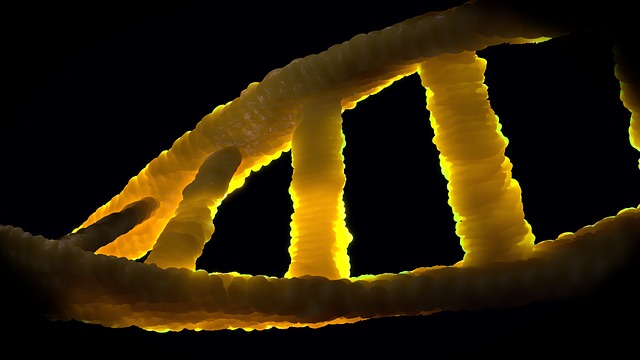In the modern era of personalized medicine, molecular diagnostics has emerged as a cornerstone of healthcare. By dissecting the genetic, proteomic, and metabolomic signatures that underlie disease, these techniques provide clinicians with unprecedented precision in diagnosis, prognosis, and treatment selection. The rapid expansion of high‑throughput sequencing, multiplexed PCR, and biosensor technologies has turned the once‑laborious task of genetic testing into a routine component of clinical workflows, empowering patients and physicians alike to make data‑driven decisions.
The Evolution of Molecular Diagnostics
From the first polymerase chain reaction (PCR) amplifications in the 1980s to today’s CRISPR‑based detection systems, the field of molecular diagnostics has undergone a remarkable transformation. Initially limited to research laboratories, PCR quickly found its way into clinical settings, enabling the rapid detection of infectious agents such as HIV and hepatitis viruses. The next wave brought next‑generation sequencing (NGS), which allowed comprehensive profiling of entire genomes and transcriptomes within a single run. As computational power grew, bioinformatics pipelines evolved to translate raw sequence data into actionable clinical insights, creating a seamless bridge between bench science and bedside care.
Core Technologies Driving the Revolution
Several key technologies have propelled molecular diagnostics forward, each addressing distinct clinical needs while complementing one another:
- Multiplexed PCR: Enables simultaneous amplification of multiple genetic targets, reducing turnaround time and sample consumption.
- Next‑Generation Sequencing (NGS): Provides whole‑genome, exome, or targeted panel sequencing, capturing rare variants and structural changes.
- Digital Droplet PCR (ddPCR): Offers absolute quantification of nucleic acids with sub‑percent precision, ideal for low‑abundance biomarkers.
- CRISPR‑based Biosensors: Leverage programmable nucleases for rapid, point‑of‑care detection of nucleic acid sequences with minimal instrumentation.
- Microfluidic Platforms: Integrate sample processing, reaction chambers, and detection in a single chip, facilitating high‑throughput and automation.
These tools collectively create a robust infrastructure that supports both large‑scale genomic studies and routine clinical testing, illustrating how molecular diagnostics continues to evolve in tandem with emerging technologies.
Clinical Applications and Case Studies
In oncology, molecular diagnostics informs treatment selection by identifying actionable mutations. For instance, the detection of EGFR exon 19 deletions or L858R mutations in non‑small cell lung cancer patients has guided the use of tyrosine kinase inhibitors, improving survival rates and reducing unnecessary exposure to cytotoxic chemotherapy.
Beyond cancer, molecular diagnostics has revolutionized infectious disease management. Rapid PCR‑based panels for respiratory viruses can differentiate between influenza, RSV, and SARS‑CoV‑2 within hours, enabling timely antiviral therapy and isolation protocols. In prenatal care, non‑invasive prenatal testing (NIPT) uses cell‑free fetal DNA circulating in maternal plasma to screen for trisomies 21, 18, and 13, dramatically lowering the need for invasive procedures such as amniocentesis.
Metabolic disorders are another arena where molecular diagnostics shines. Whole‑exome sequencing has identified pathogenic variants in genes responsible for lysosomal storage diseases, allowing early intervention and improved quality of life for affected individuals. In cardiology, the discovery of pathogenic variants in genes like SCN5A and MYH7 has informed risk stratification and management of inherited arrhythmias and cardiomyopathies.
Emerging Trends in Molecular Diagnostics
As the field advances, several trends are shaping the future of molecular diagnostics:
“The integration of artificial intelligence with genomic data is set to unlock predictive analytics that were previously unimaginable.” – Dr. A. Patel, Genomic Medicine Institute
Artificial intelligence (AI) and machine learning algorithms now sift through vast genomic datasets to predict disease susceptibility, drug response, and potential adverse events. This convergence is accelerating the transition from reactive to proactive healthcare. Moreover, liquid biopsy platforms are gaining traction, enabling the detection of circulating tumor DNA (ctDNA) for real‑time monitoring of treatment efficacy and early relapse detection.
Challenges and Ethical Considerations
Despite its transformative potential, molecular diagnostics faces several challenges. The sheer volume of genomic data raises concerns about data storage, cybersecurity, and patient privacy. Standardization of reporting formats and variant interpretation guidelines remains inconsistent across laboratories, potentially leading to variable clinical decisions. Furthermore, the high cost of some advanced tests can limit accessibility, particularly in low‑resource settings.
Ethically, questions about incidental findings and genetic discrimination loom large. Clinicians must navigate the delicate balance between disclosing clinically actionable information and respecting patient autonomy. Robust counseling frameworks and clear consent processes are essential to mitigate anxiety and ensure informed decision‑making.
Future Outlook
- Integration with Electronic Health Records (EHRs): Seamless embedding of genomic data into EHRs will streamline clinical workflows and enable real‑time decision support.
- Point‑of‑Care Genomics: Portable sequencing devices and paper‑based microfluidics promise rapid, bedside diagnostics that bypass traditional laboratory infrastructure.
- Global Collaboration: Open‑access genomic databases and multinational consortia will accelerate variant discovery and equitable access to diagnostic advances.
- Regulatory Harmonization: International standards for quality control, assay validation, and result interpretation will enhance trust and consistency in molecular diagnostics worldwide.
Conclusion
Molecular diagnostics stands at the forefront of a healthcare revolution, where precision, speed, and personalization converge to improve patient outcomes. By harnessing cutting‑edge technologies, clinicians can uncover the underlying biological mechanisms of disease, tailor therapies, and monitor response with unprecedented accuracy. As we continue to refine analytical methods, address ethical dilemmas, and promote global accessibility, the promise of molecular diagnostics will extend beyond specialty clinics to the broader landscape of public health, ensuring that every individual receives care informed by their unique molecular profile.




